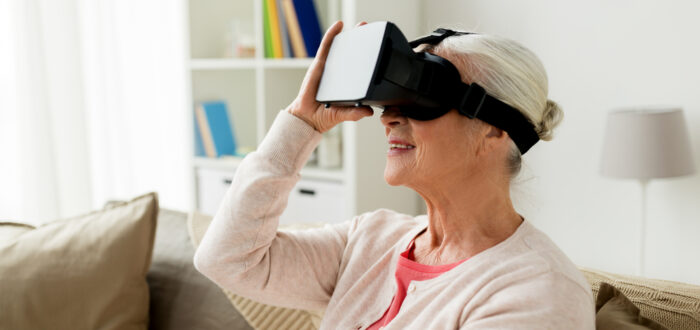Virtual Reality (VR) has transformed the way we interact with digital environments, offering immersive experiences that captivate our senses. However, ensuring these innovative experiences are accessible to everyone, including individuals with hearing impairments, is important for fostering inclusivity.
In this blog, we discuss some of the advancements and strategies being implemented to tailor VR experiences for hearing accessibility.
Exploring Hearing Accessibility in Virtual Reality (VR)
VR experiences traditionally rely heavily on audio cues to create immersive environments. From the subtle footsteps of an approaching character to the booming sounds of a distant explosion, audio plays a pivotal role in VR.
For individuals with hearing impairments, missing out on these cues can significantly diminish the experience. Recognizing this, developers and accessibility advocates are working together to create solutions that enhance VR accessibility.
Strategies for Tailoring VR Experiences
VR experiences can be tailored to individuals with hearing loss in a number of ways. These include:
- Visual Cues and Subtitles: Incorporating visual cues and subtitles can significantly improve VR experiences for users with hearing impairments. Visual indicators for key audio events, directional arrows for approaching sounds, and on-screen text for dialogue ensure that all users can fully engage with the VR environment.
- Haptic Feedback: Haptic feedback technology, which provides physical sensations to the user, offers an innovative way to convey audio information through touch. Vibrations can indicate the intensity and direction of sounds, providing an alternative sensory channel for experiencing VR.
- Adjustable Audio Settings: Allowing users to adjust audio settings, including volume and balance, can help those with partial hearing loss to customize the sound to their needs. Some VR systems are also exploring the use of advanced audio processing to isolate speech from background noise, making dialogue clearer.
- Sign Language Avatars: The integration of sign language avatars within VR experiences is a groundbreaking development for deaf users. These avatars can translate spoken language into sign language in real-time, ensuring accessible communication within VR platforms.
- Collaborative Efforts for Standardization: Organizations and developers are collaborating to establish accessibility standards for VR content. These guidelines aim to ensure that accessibility features, such as subtitles and visual cues, are consistently implemented across VR experiences.
The Future of Accessible VR
As VR technology continues to evolve, the emphasis on accessibility is becoming increasingly prominent. Developers are not only focusing on creating new content, but also on retrofitting existing VR experiences with accessibility features. This commitment to inclusivity promises a future where VR can be enjoyed by everyone, regardless of hearing ability.
The Role of Feedback and Ongoing Development
User feedback is instrumental in refining VR accessibility. By listening to the experiences and challenges faced by individuals with hearing impairments, developers can continuously improve and innovate accessibility features. The journey towards fully accessible VR is ongoing, with each advancement bringing us closer to an inclusive digital world.
Need Help? Have a Question? Contact Us Today!
At the Regional Hearing & Balance Center, your health and well-being are our top priority. If you have more questions or concerns about the compatibility of hearing aids with pacemakers or any other hearing-related matters, don’t hesitate to reach out to our expert team. Call us at 208-497-3596 or click here to book a complimentary hearing assessment.


Recent Comments